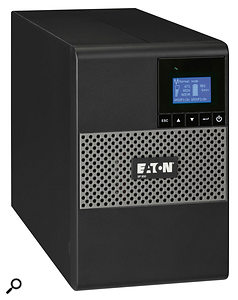I recently got some 110V rackmount synths and, being in the UK, I need a step–down transformer to power them. I haven't had lots of time to research this but have seen recommendations for a unit with a toroidal transformer. I wonder too if it might be worth investing in some power conditioners, as there are a few appliances likely to send nasty clicks into the mains here — and we get the occasional 'brownout' too. What advice can you offer?
SOS Forum post
SOS Technical Editor Hugh Robjohns replies: All transformers create a varying magnetic field around them which can induce mains-related hum into nearby audio cables and equipment, and the more powerful the transformer the larger that field tends to be. Torroidal transformers tend to radiate a much smaller external magnetic field, and that's one reason they're recommended in this kind of application.
 While a power conditioner won't help with power 'brownouts', a UPS will.The most important consideration, though, is the transformer's power rating. You need something with sufficient capacity to handle all your 110V equipment's needs, but not too much more, as the larger the transformer, the more it will cost and the heavier it will be, making it more expensive to deliver. You can work out the required power rating by checking the values for Watts or 'VA' on labels near the mains sockets of your equipment. Add the numbers together and buy the next biggest step-down transformer you can find. I also recommend purchasing a decent high-quality US-style mains distribution plug-board (with proper 'three-prong' grounded outlets) to make it easier to connect the devices to your step-down transformer.
While a power conditioner won't help with power 'brownouts', a UPS will.The most important consideration, though, is the transformer's power rating. You need something with sufficient capacity to handle all your 110V equipment's needs, but not too much more, as the larger the transformer, the more it will cost and the heavier it will be, making it more expensive to deliver. You can work out the required power rating by checking the values for Watts or 'VA' on labels near the mains sockets of your equipment. Add the numbers together and buy the next biggest step-down transformer you can find. I also recommend purchasing a decent high-quality US-style mains distribution plug-board (with proper 'three-prong' grounded outlets) to make it easier to connect the devices to your step-down transformer.
As for power conditioners, I'm not a fan and don't personally spend my cash on them! A standard power conditioner won't help with brownouts, and while some may help with transient spikes, noise and RF interference on the incoming mains supply, I've never found them to be very helpful. Any modern or decently designed and manufactured equipment should have perfectly adequate mains filtering on its inputs anyway — though some vintage equipment may be less well-equipped in this regard — and, unless you live very remotely with long overhead mains feeds, the chances of damaging transients are exceedingly small here in the UK (the risk may be higher in some other territories).
A good online UPS is not cheap, and you will need to replace the battery every few years!
If you're really concerned about needing ultra-clean and very stable mains, you'd be much better off investing in a good–quality UPS (uninterruptible power supply) system, but make sure it's one that generates a proper sine–wave output, not an 'approximated sine wave' or stepped one. A 'line-interactive' type only replaces the incoming mains supply when it fails completely or supplies too low or high a voltage, but will deal with brownouts and short-term (ie. tens of minutes) failures. If you want 'perfect' mains, you'll need a 'continuous' or 'online' UPS, which uses the mains to charge the battery continuously while simultaneously generating an independent mains supply from the battery — effectively providing complete isolation from the incoming mains supply and any nasties it might harbour. But a good online UPS is not cheap, and you will need to replace the battery every few years! I use a line-interactive UPS for my computer and related equipment but none of my analogue gear is powered from it, and I've never had any issues at all.
